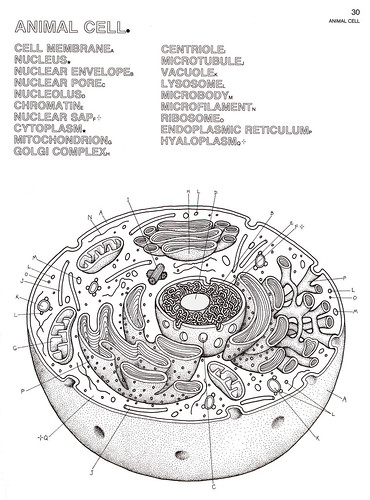For some time now I have been a proponent of including researchers – for example, those with a Ph.D. – in teaching science to high school students. While I have no doubt that the inclusion of a motivated and talented body of researchers in secondary school education will be highly beneficial to all involved: high students students, the Ph.D.-holding teachers, and the entire scientific system, it was only recently that I became aware of how badly such a change is needed.
I was recently asked to take a look at a worksheet on “The Cell” – essentially a two dimensional drawing of the cell and its many wondrous organelles and major structures – and I found the quality of the drawing to be so poor that even as an expert in cell biology with years of microscopy experience and looking at these very organelles, I could not even identify all of the structures.
How embarrassing; the Director, no less, of the Advanced Microscopy Core facility at my institution, and unable to completely place all of the names on all of the structures on the worksheet.
The microbody? Give me a break…
In my defense, here is a copy of the weird worksheet. Particularly alarming was the use of the term “microbody” – a relict term from the 50s when researchers first used electron microscopy, and couldn’t accurately place a variety of small organelles. Certainly a useless and unused term in modern science (and by modern, I mean the last 40 years…). Why would it appear as a term to identify on a worksheet of “The Cell” in 2014? Why not use peroxisome? Endosome? How did this sheet even come to be used in an Advanced Placement course for high school biology in the US?
In any case, with or without microbodies, the depiction of the cell as a static, 2-dimensional and stick-like series of structures (something that would be expected of a terrible artist such as myself if forced to draw) is not a particularly flattering picture of our secondary education system. Admittedly, I was impressed with the textbook and the relatively solid foundation in chemistry that I encountered.
In today’s era of wonderful online tools, 3-dimensional movies – and yes, super-resolution microscopy (“trailer” for Structured Illumination Microscopy, coming to a blog near you soon!) – much more can be done. Look at those lovely 3-dimensional Golgi stacks/ribbons! Now that’s a cellular organelle!
So what’s the problem? Let’s get well-qualified Ph.D. teachers into the system.

